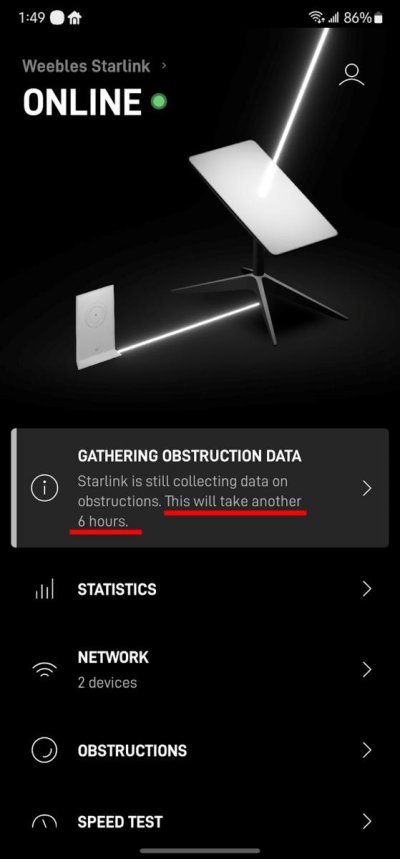mvweebles
Guru
- Joined
- Mar 21, 2019
- Messages
- 7,365
- Location
- United States
- Vessel Name
- Weebles
- Vessel Make
- 1970 Willard 36 Trawler
I arrived back in Ensenada a few days ago and re-activated my Starlink subscription. Wasn't working well - trouble connecting, and if/when it did connect, speeds were awful, especially upload.
Initially, I suspected a bad Ethernet cable connecting the SL Ethernet Adapter to the Pepwave router. Didn't solve the problem. So I reached out to the retailer from whom I purchased (5GStore). Their tech support responded within an hour and suggested placing the Starlink router in bypass mode (decent article describing it HERE, mostly it disables the SL Router's WiFi capabilities but has other features/benefits that may be beneficial to anyone running a 3rd Party Router behind the SL router).
Definitely solved the problem for me. Any thoughts on unintended consequences? Attached is a simple schematic of my system, and the error messages I was receiving.
Thoughts?
Peter


Initially, I suspected a bad Ethernet cable connecting the SL Ethernet Adapter to the Pepwave router. Didn't solve the problem. So I reached out to the retailer from whom I purchased (5GStore). Their tech support responded within an hour and suggested placing the Starlink router in bypass mode (decent article describing it HERE, mostly it disables the SL Router's WiFi capabilities but has other features/benefits that may be beneficial to anyone running a 3rd Party Router behind the SL router).
Definitely solved the problem for me. Any thoughts on unintended consequences? Attached is a simple schematic of my system, and the error messages I was receiving.
Thoughts?
Peter




